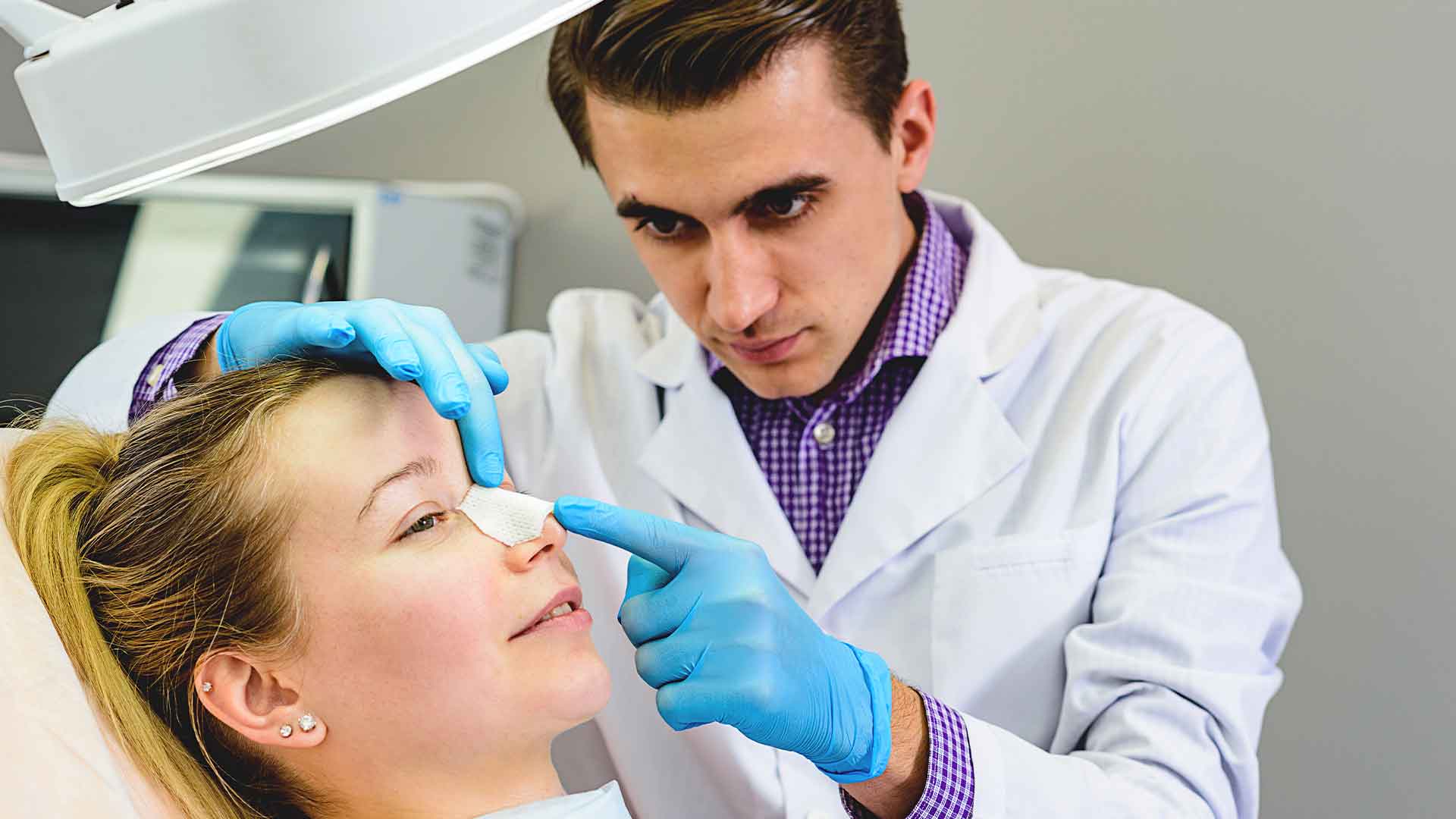Septoplasty (Septum) Deviation
Septoplasty surgery is a disorder characterized by the inability to position the nasal septum correctly in the midline of the nose due to various reasons and a curvature of the septum itself. The bone and cartilage structure in the middle of the nose, known as the nasal septum, is located in the form of a trapezoid in what is known as the septum deviation.
This makes it difficult for a person to breathe through the nose, and in rare cases, it causes the nostrils to close completely, making it impossible to breathe through the nose. Septal deviation caused by past physical injuries may occur from time to time during the mother’s pregnancy and due to genetic or structural factors.
However, most septal deviations result from previous physical trauma. Conchae are swollen, squishy tissues in the nose. It is possible that the septum deviation is accompanied by turbinate hypertrophy, which is the enlargement of the nasal concha and makes it more difficult to breathe through the nose.
People with septum deviation may also have chronic nasal congestion, nasal breathing, periodic nosebleeds, recurrent sinus infections (sinusitis), runny nose, and snoring. Septum deviation can also contribute to the development of systemic diseases such as heart disease, high blood pressure and others.
What is Septoplasty (Septum) Surgery?
The surgical technique known as septoplasty surgery is used when the nasal septum is found to be twisted for various reasons. During this treatment, bone and cartilage tissues are changed to correct the distortion in the septum (septum deviation surgery). In this surgery, the bone tissues that prevent breathing through the nose are removed and the existing cartilage tissues are restructured and placed in suitable positions.
Why is Septoplasty (Septum) Deviation Surgery Performed?
Chronic nasal congestion does not directly constitute a systemic disease; however, it facilitates the progression and more severe of pre-existing disorders. A deviated nasal septum can cause a variety of problems and make it difficult to breathe.
The inability to breathe through the nose while sleeping is the most common cause of sleep disorders; However, oral health problems caused by dry mouth, throat infections, snoring and deviation also seriously affect people’s health and daily comfort. All of these disorders are addressed through surgical procedures known as septoplasty.
How is Septoplasty (Septum Deviation Surgery) Performed?
As in all other procedures, it is very important to make a definitive diagnosis when performing septoplasty surgery. As a result, the general health status of the patient and abnormalities in the structure of the nasal septum are determined as the first stage in the process. Radiographic imaging technology and intranasal cameras are sometimes used as diagnostic tools.
The patient’s condition is then evaluated before deciding on the type of anesthesia provided to them. In the past, septoplasty operation, local anesthetic procedures were widely used; however, general anesthesia is now preferred due to patient comfort, advanced anesthesia techniques and excellent anesthesia reliability.
After the anesthesia is provided, the actual surgical operation begins. At this point, a small incision is made at the back of the nose to reach the internal tissues and excess bone tissue is removed from the opening created by this treatment. Then, any problem in the nasal cartilage tissues that is not caused by the excess tissue is treated in the nose and the operation is completed.
When the structural defects in the cartilage tissues of the nose are too severe to be operated through the nose, the cartilage tissues can be replaced and displaced externally. If the external curvature of the nose is caused by internal structures and bone curvature, the “open technique” in which the nasal skin is removed and the operation is performed can be used. In this treatment, the nasal skin is removed and the external bone curvature is treated.
The aesthetic treatment known as “rhinoplasty” is sometimes done in conjunction with septoplasty to achieve the best results. Concha hypertrophy, a condition in which intranasal soft tissues enlarge for reasons such as allergies, can also be treated during the same surgery as the original problem. Stitches are used to close the incision formed during the surgery.
Although it is possible to use self-dissolving stitches in some cases, you will need to remove the stitches one week after surgery. A tampon is placed in each nostril at the end of the procedure to stop the blood flow.
Most modern tampons are silicone and are significantly more comfortable than previous tampons as they do not impede the patient’s breathing capacity. Between 72 hours and a few days following the septum deviation operation, tampons are removed from the patient under the supervision of the treating surgeon.

